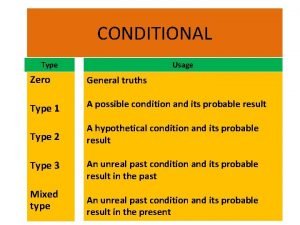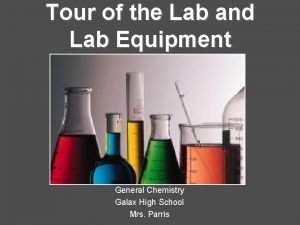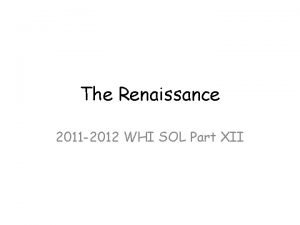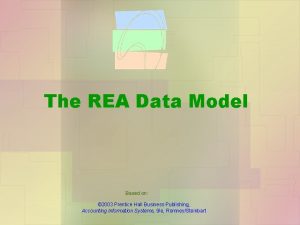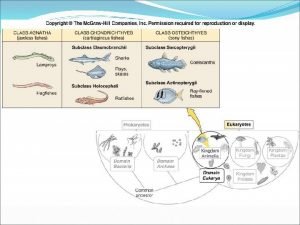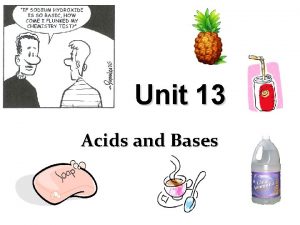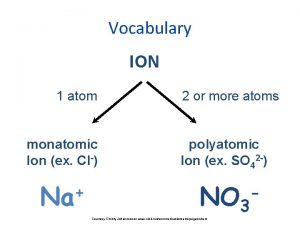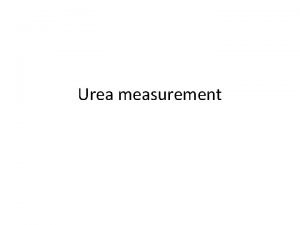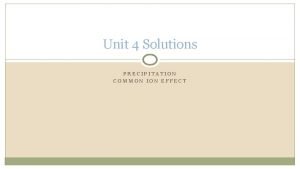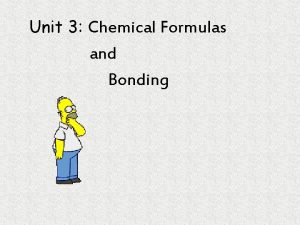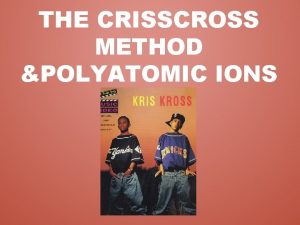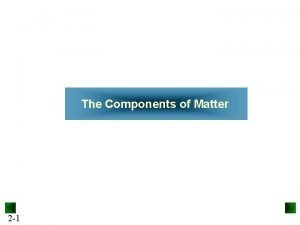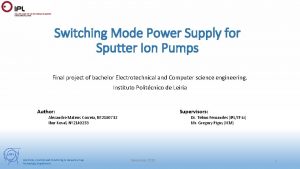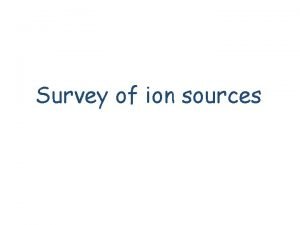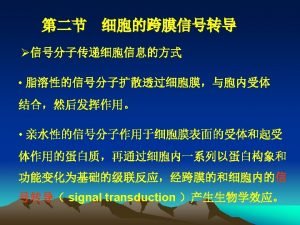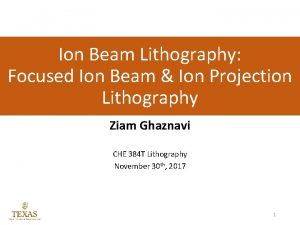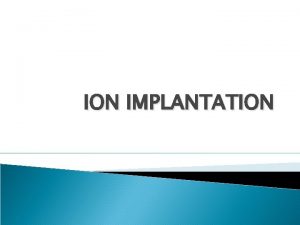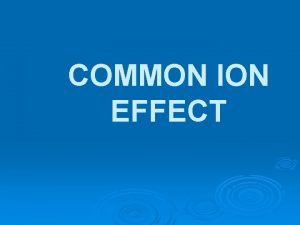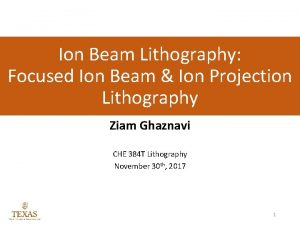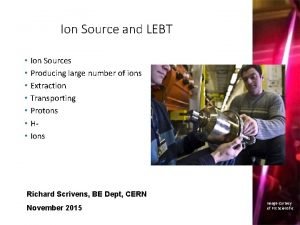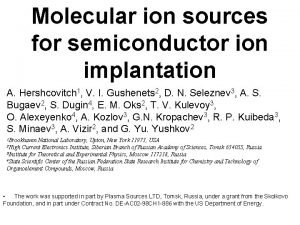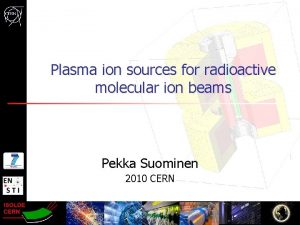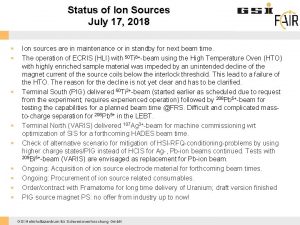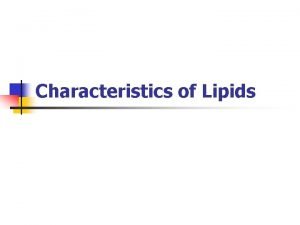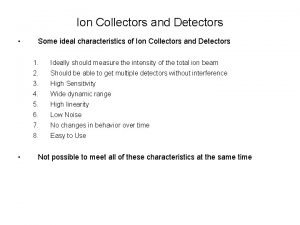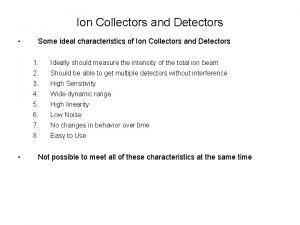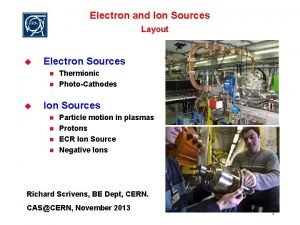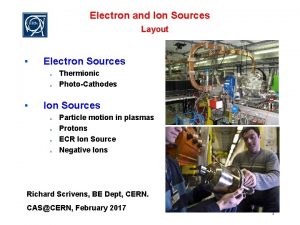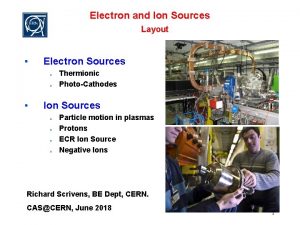Ion Sources Some characteristics of ion sources especially







































- Slides: 39

Ion Sources Some characteristics of ion sources (especially in high precision work): • It should have high efficiency in generating ions of the element of interest (or a range of elements). • All of the ions should have the same energy. • It should produce an ion beam with low divergence. • The ions should be the same charge (preferably +1 for positive ions or -1 for negative ions) so we separate by mass and not m/q. • The ion beam should be stable. • The ion beam should have isotopic ratios the same as the sample.

Thermal Ionization MS n Advantages – Extremely Stable – Generally less prone to isotopic fractionation effects than other sources – Thermalized ions (narrow energy range) n Disadvantages – Complicated sample preparation – Incomplete isotope (elemental) coverage » Inconsistent positive or negative ionization efficiencies across periodic table

Inductively Coupled Plasma MS n Advantages – High sensitivity – Nearly complete isotope coverage – Liquid, solid or gas samples – Short analysis times – Less “art” n Disadvantages – – – Isobaric interferences Relatively noisy Wide ion energy spread Inefficient Spectral complexity

So what is the ICP? What equipment does it require? n How does it operate? n What are its features? n How does it work with MS? n

Basic ICP Instrument Sample Introduction System ICP Spectrometric System Readout System

Torch Inductively Coupled Plasma Atomic Emission Spectrometry (ICP-AES) Nebulizer Spray Chamber 99%

Types of ICP Nebulizers Concentric pneumatic n Cross-flow pneumatic n Ultrasonic (high sensitivity) n High-solids (V-groove, Babington, etc. ) n …. . n

Types of ICP Spray Chambers Scott-type n High-efficiency n Cyclonic n Desolvating n …. . n

The Inductively Coupled Plasma n A plasma is a hot, partially ionized gas. n The ICP is an argon-based, radio frequency plasma. n The input rf frequency is either 27 or 40 MHz at powers from 1 to 2 k. W. n The plasma is formed and contained in a three tube quartz touch. n The temperature in the central analyte channel ranges from about 6000 to 8000° K. n At these temperatures most elements are largely atomized and ionized

The ICP Torch and Plasma

THE STEPS

THE STEPS

ICP torch, nebulizer, spray chamber

Inductively Coupled Plasma (ICP) YO Tail Flame Y+ Normal Analytical Zone Y e- + Ar Ar+ + 2 e- Induction (Load) Coil Sample Aerosol

Inductively Coupled Plasma (ICP) hν Mass Spectrometer

Inductively Coupled Plasma Mass Spectrometry


ICP-MS Interface Cones




Supersonic Expansion

Consequences of Expansion Small ions Ar Ar Li Ar Ar KE = 0. 5 MV 2 So KEM+ = k. M+ Large ions Ar Ar Ar Cs

Plasma Offset (Rectification) + e- — Mass Spectrometer

Plasma Offset (Rectification) — Mass Spectrometer + Ar+

Ion Energies Depend on Mass 27 MHz - open symbols 40 MHz - closed symbols o - “hot” plasma m - “cold” plasma

Ion Currents in ICP-MS

Spectral Characteristics of ICP-MS

ICP-MS Background: 5% HCl

ICP-MS Background: 5% H 2 SO 4

Oxide and Hydroxide Species

Variables Affecting Oxide Levels

Matrix Induced Signal Changes

Matrix Effects in ICP-MS

ICP-MS Options for Isotope Ratios n Multi-collector sector-field spectrometer – Offered by Thermo (Neptune), GV, and Nu – Isotope-ratio precision ~0. 002% rsd (20 ppm) n Time-of-flight mass spectrometer – Leco & GBC – Isotope-ratio precision ~0. 05% rsd analog – Isotope-ratio precision ~0. 01% rsd counting n Array-detector sector field – Not yet commercially available – Isotope-ratio precision ~0. 007% rsd

Thermo Neptune MC-ICP-MS

Nu Instruments MC-ICP-MS

Leco Renaissance ICP-TOFMS

GBC Optimass ICP-TOFMS
 C6h12 fuerza intermolecular
C6h12 fuerza intermolecular Ejemplo de fuerza ion ion
Ejemplo de fuerza ion ion Que son fuerzas intramoleculares
Que son fuerzas intramoleculares Induced dipole induced dipole attraction
Induced dipole induced dipole attraction Print sources and web sources
Print sources and web sources Water management importance
Water management importance Ethical media issues
Ethical media issues Binnerts may look for some sources
Binnerts may look for some sources Hbv foods
Hbv foods Some sources of vitamin c are green pastures and hay
Some sources of vitamin c are green pastures and hay Sometimes you win some
Sometimes you win some Sometimes you win some
Sometimes you win some Ice cream è countable or uncountable
Ice cream è countable or uncountable What are some contact forces and some noncontact forces
What are some contact forces and some noncontact forces Fire and ice diamante poem
Fire and ice diamante poem Some say the world will end in fire some say in ice
Some say the world will end in fire some say in ice Some trust in chariots and some in horses song
Some trust in chariots and some in horses song It is verbal interchange of ideas; especially conversation
It is verbal interchange of ideas; especially conversation Used for heating of stable solid compounds and elements
Used for heating of stable solid compounds and elements A person who supports artists especially financially
A person who supports artists especially financially Rea model
Rea model Forecasting is difficult especially about the future
Forecasting is difficult especially about the future Anthropophillic
Anthropophillic The highwayman summary
The highwayman summary Characteristics of web engineering
Characteristics of web engineering Physical and human characteristics
Physical and human characteristics What are some special characteristics
What are some special characteristics Subphylum vertebrata characteristics
Subphylum vertebrata characteristics What are some special characteristics
What are some special characteristics Examples of acids
Examples of acids What are some characteristics of a wise money manager
What are some characteristics of a wise money manager Monatomic and polyatomic ions
Monatomic and polyatomic ions Urea ions
Urea ions Common ion effect example
Common ion effect example Criss cross method of aluminium chloride
Criss cross method of aluminium chloride Criss-cross method examples
Criss-cross method examples Ag2scompound name
Ag2scompound name Carbon dioxide ion
Carbon dioxide ion Tcs internal certification
Tcs internal certification Sputter ion pump working principle
Sputter ion pump working principle







